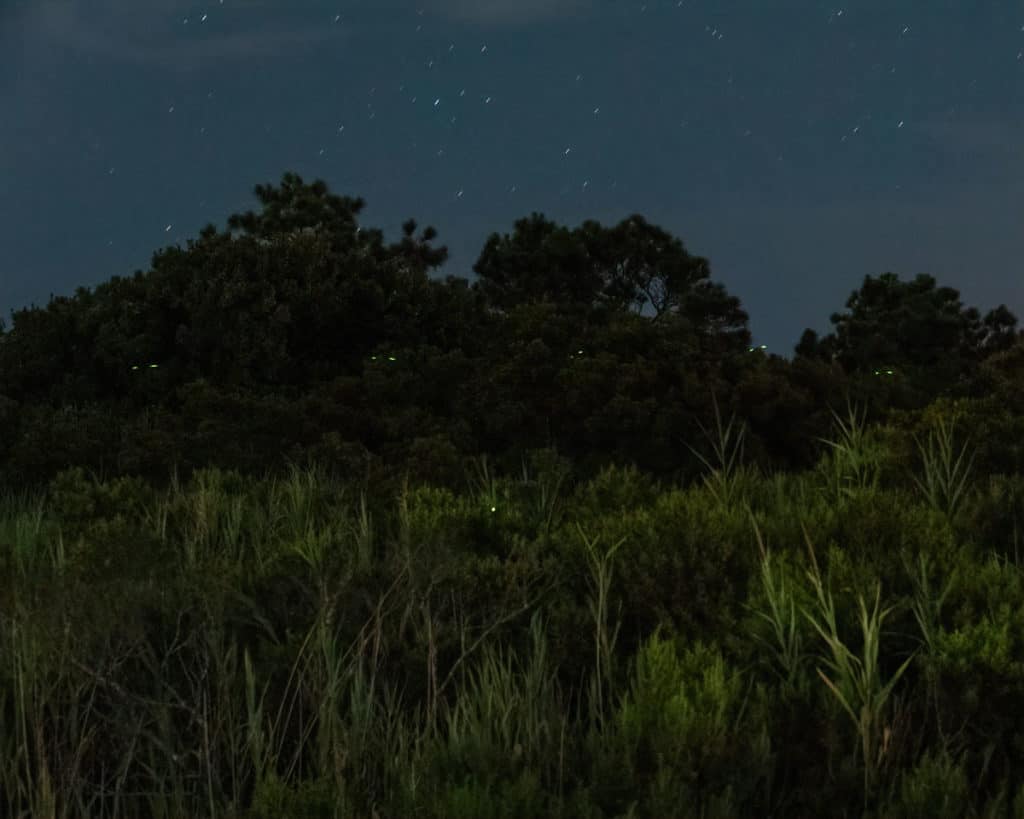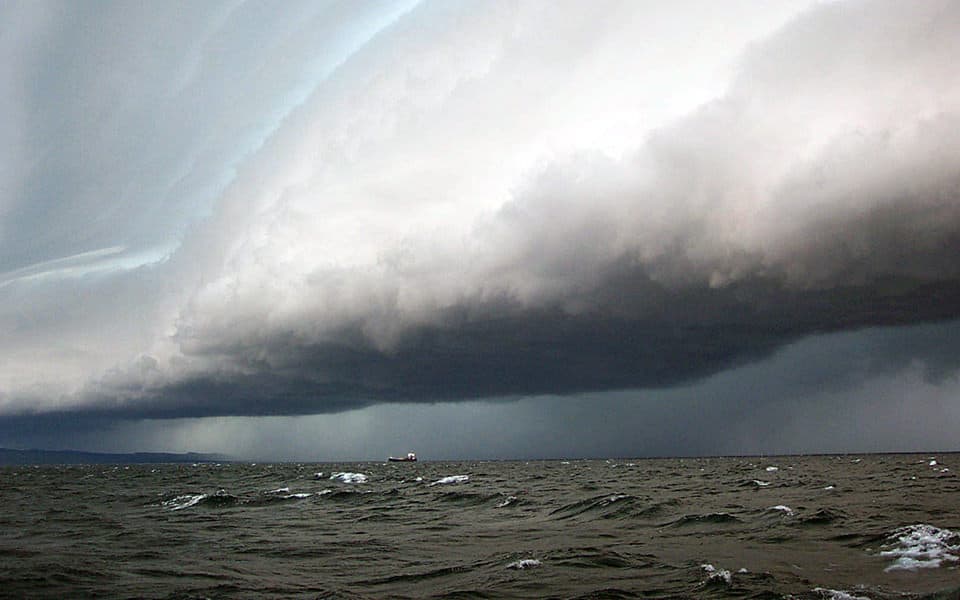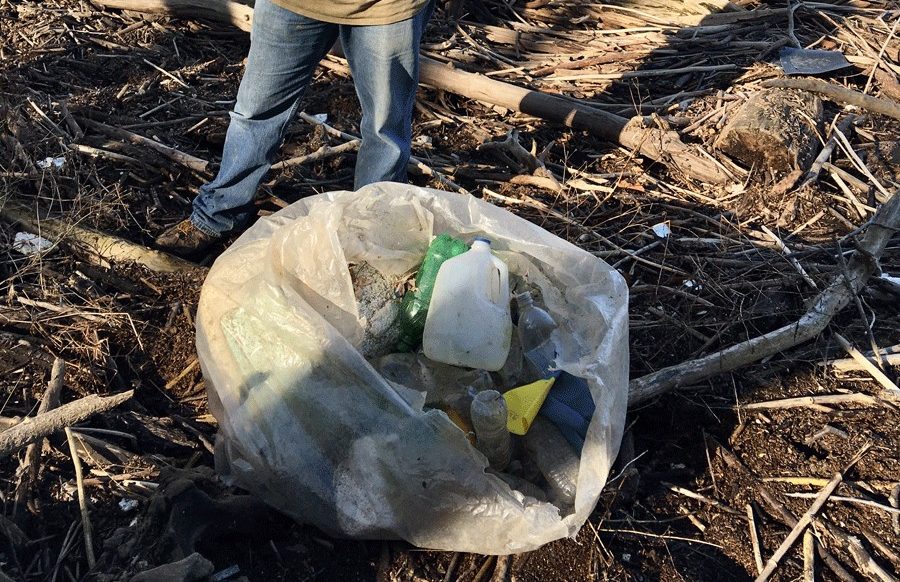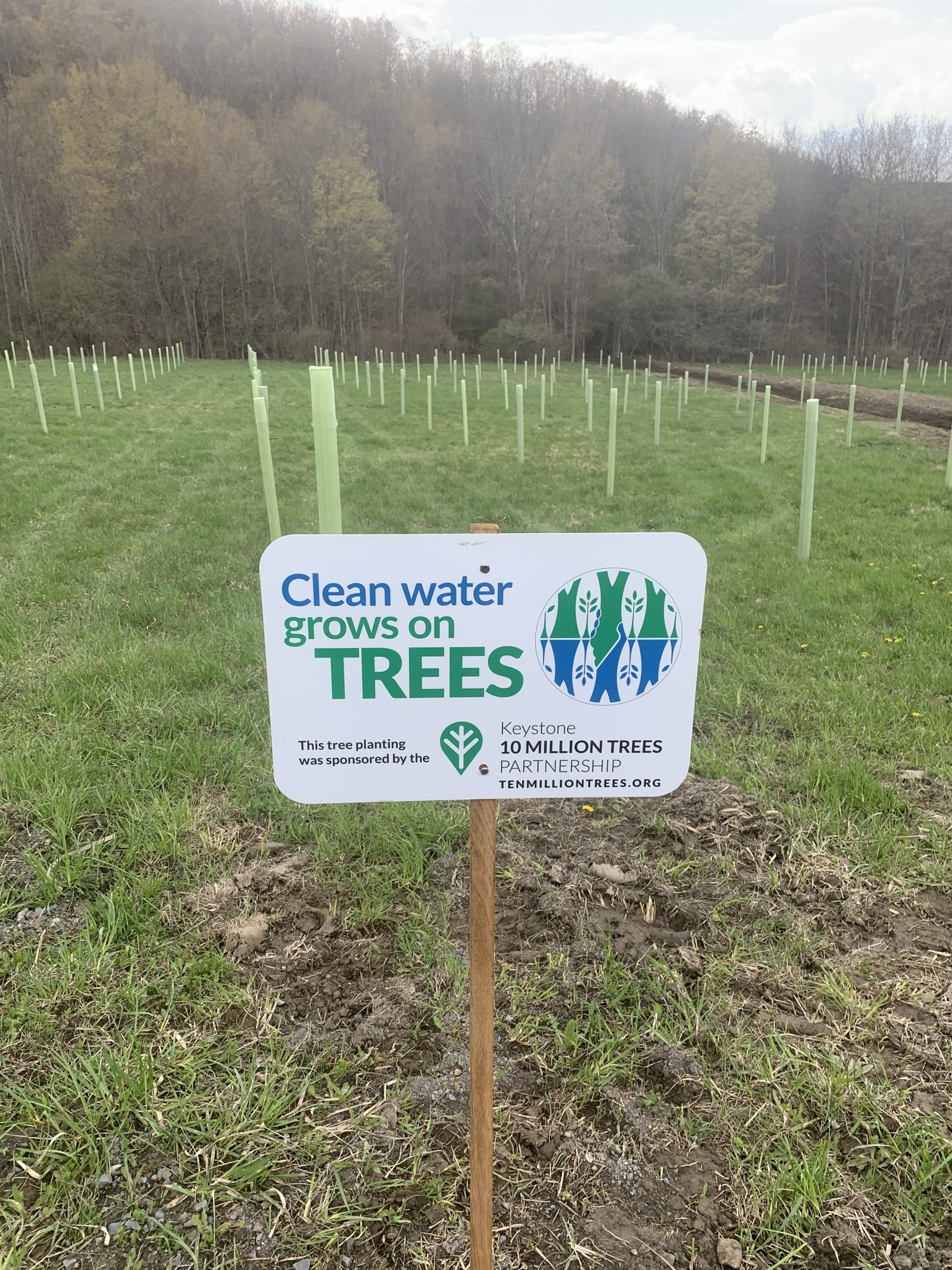Prospects are dimming for the rare Bethany Beach firefly.
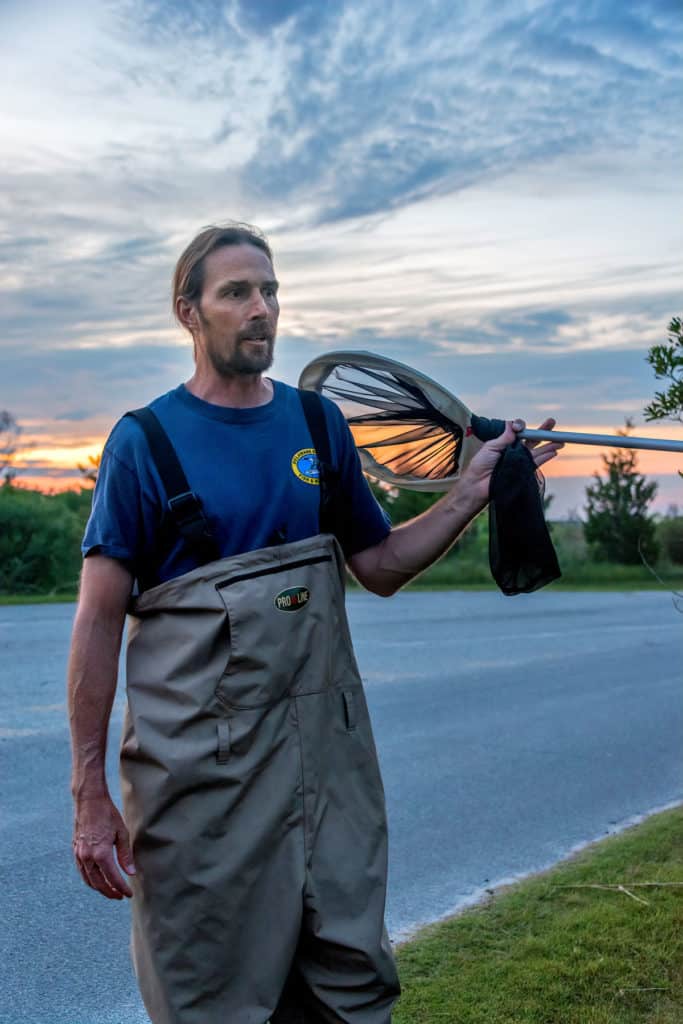
Photo credit: Linda Rosenbluth
It’s a Friday night in August and traffic on Delaware’s Coastal Highway is heavy with young people heading to the Dewey Beach bars. In a state park just off the highway, wildlife biologist Jason Davis scans the dunes for a different kind of nightlife. The passing headlights twinkling through the bushes make it tricky.
“Airplanes blinking, car lights through the trees. There are a lot of things that can fool your eyes,” Davis says. “Once I saw a shooting star and thought for a minute it was a firefly.”
Davis is counting specimens of Photuris bethaniensis, the Bethany Beach firefly, as part of a survey for Delaware’s Division of Fish and Wildlife. Known for its distinctive green double flash, the species is increasingly famous for its scarcity. The Bethany Beach firefly is known to inhabit only seven sites, some no larger than a living room. The sites are all interdunal swales, a rare type of freshwater wetland found in depressions between sand dunes. They fall along a 20-mile section of the southern Delaware Coast, including a sliver of land bound by the Atlantic Ocean on one side and the Inland Bays on the other. The narrow stretch, less than 1,000 feet wide in places, is bisected by a busy four-lane highway.
So few Bethany Beach fireflies are thought to remain that last year the Center for Biological Diversity and the Xerces Society for Invertebrate Conservation petitioned to have the insect listed as federally endangered. The petition notes that the Bethany Beach firefly is “at immediate risk of extinction” from the “imminent destruction” of much of its habitat. It lists development, sea level rise, pesticides, and invasive plants among the threats the species faces. Late last year, the U.S. Fish and Wildlife Service (USFWS) announced that the petition had surmounted an important hurdle: An initial review found the firefly’s plight merits further examination. The process could take years, but if successful, Photuris bethaniensis would become the first firefly ever federally listed.
It is not, however, the only bioluminescent beetle in decline. A recent study in the journal Bioscience found that many of the world’s 2,000-plus firefly species are under threat from habitat loss, pesticide use, and light pollution. Fireflies talk to one another using light. Artificial lights inhibit their ability to communicate and lower their odds of finding a mate.
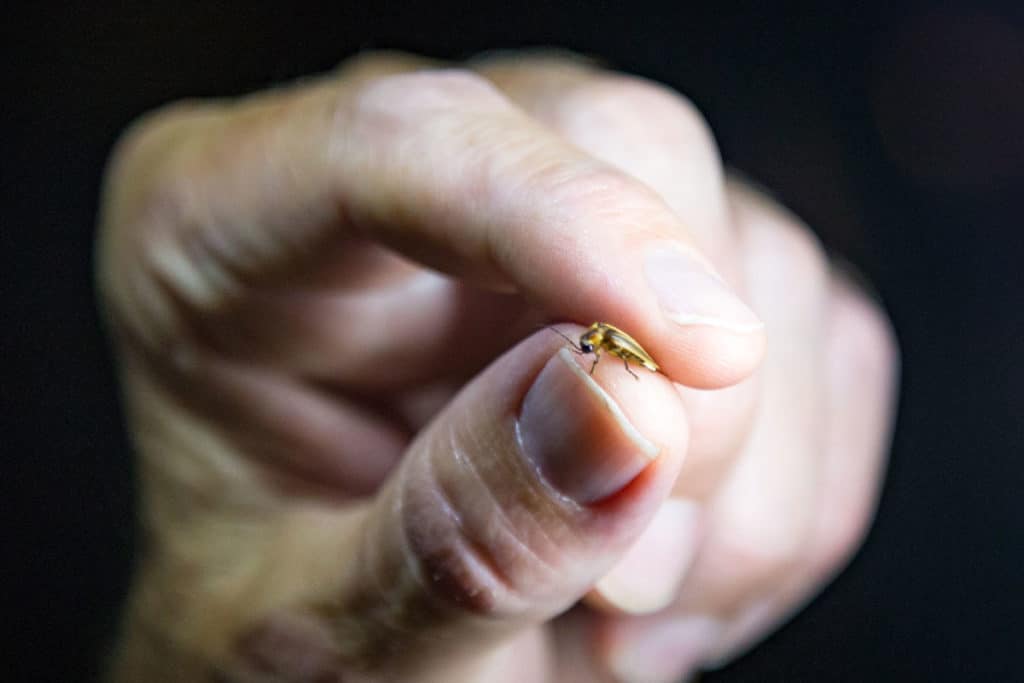
Candace Fallon, a senior conservation biologist for the Xerces Society and co-author of the petition on behalf of the Bethany Beach firefly, says no one knows definitively how many of the 170 described firefly species in the United States are in trouble. “We are trying to figure that out now,” she says. “We’ve been hearing so many anecdotal reports from researchers on firefly declines.”
The Bethany Beach firefly has a special distinction beyond its extreme scarcity: It is the only species of any kind, plant or animal, that is found only in Delaware. Entomologist Christopher Heckscher, an environmental scientist at Delaware State University, rediscovered the Bethany Beach firefly in the late 1990s. First described in 1953, it had not been recorded since.
“I was aware of a rare ecosystem type down among the dunes on Bethany Beach,” he says. “I figured if there’s a rare firefly, it’s probably associated with a rare wetland. I’m pretty sure we found it on our first night out.”
Heckscher went on to conduct a survey for the firefly. His data, now two decades old, forms the heart of the endangered species petition. (Once Jason Davis’ new data is released, it too will be submitted to the USFWS.) He identified seven sites. Six were on state land, but the site with the greatest abundance of the imperiled firefly was on private property. Heckscher counted hundreds of fireflies there. “When I did my survey, that was the best site in Delaware,” he says, “or the world, I guess.”
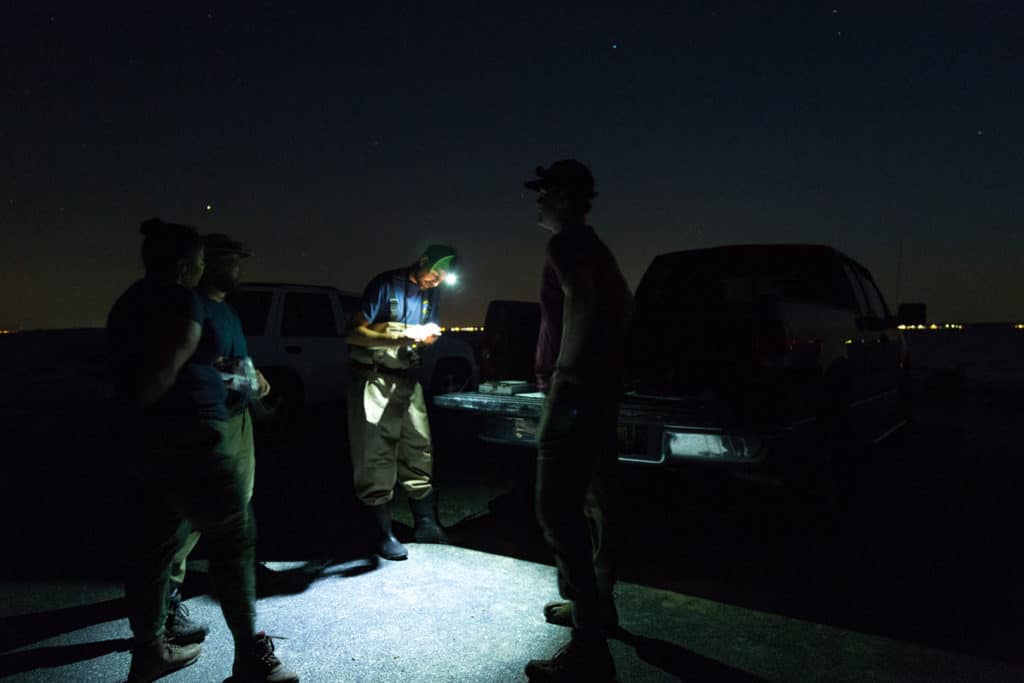
Photo credit: Kayt Jonsson/USFWS photos
The nearly two-acre wetland lies north of Bethany Beach in a community known as Breakwater Beach. It is surrounded by multi-million-dollar beach homes. Louis Capano III, a member of the Capano family, well-known developers in the area, owns the site. For decades, he sought to build on it, but federal wetland regulations stymied him. Section 404 of the Clean Water Act regulates the discharge of dredged or fill material into U.S. waters, including wetlands.
Then Capano discovered a novel workaround. He decided to build his entire eight-unit development up on an elevated wooden cul de sac over the wetland, sidestepping the regulations. The asphalt roads and driveways rest on top of the pier, as will the homes he intends to build. Capano was aided in this venture by an environmental consulting company headed by James McCulley, a former employee of the U.S. Army Corps of Engineers. McCulley’s job at the Corps? Enforcing Section 404 of the Clean Water Act.
Ed Bonner, who manages the regulatory program of the U.S. Army Corps of Engineers, Philadelphia District, is responsible for overseeing construction in the region’s waterways. He found that the Breakwater Beach development was not subject to federal regulations. “I have to look at the effect of the pilings,” Bonner says. “I’m not looking necessarily at anything that’s going to be built on top of those pilings because the word ‘shading’ is specifically not in the regulation.” The regulations govern pilings in cases where they are so large or so close together that they have the effect of fill. In this case, Bonner says, the pilings were neither large nor close together.

Attempts to reach Capano for comment were unsuccessful. But his attorney told the Associated Press last summer that Heckscher’s data was too old and limited to prove anything. “Breakcap LLC has no reason to believe that any fireflies live in or along the interdunal swale within Breakwater Beach, let alone that Breakwater Beach is critical habitat for any species.”
The project hasn’t made Capano any friends among wetland advocates. “Technically I guess he’s not violating any regulation because he’s filling so little of the wetland,” Hecksher says. “But it’s completely ridiculous. Because obviously now the wetland’s destroyed or will be destroyed. It’s not getting sunlight and getting very little water from precipitation and the water that does run off the cul de sac isn’t going to be clean.”
Chris Bason, executive director for the Center for the Inland Bays, agrees that, while the project may follow the letter of the law, it’s a death sentence for the wetland underneath. “The permitted impacts have significantly degraded the function of the wetland,” he says. “And what we care about is the function, the provision of habitat for rare plants and animals.”
If a federal endangered species designation comes, it may be too late for the fireflies that once twinkled at the Breakwater Beach site. The construction on the pier appears complete, and the wetland is now almost entirely shaded. A real estate listing posted in November boasts “Construction underway for summer 2020 delivery” on at least one home on the elevated cul de sac. It’s selling for over two million dollars.
Some wetland advocates fear the approval of the elevated development sets a dangerous precedent for future projects in the state’s wetlands. A quarter of Delaware’s land area is wetland. “I think that it’s a game-changer,” Bason of the Center for the Inland Bays says. “Certainly the environmental consultant that was able to pull this off is going to use that as a selling point for their services.” (The project is prominent on the website of the consultant, Watershed Eco. And owner Jim McCulley recently wrote a testimonial on the builder’s website noting that “after about 10 years and lots of data and studies, we were able to convince the Corps that this was truly a piling project and there would not be the same effect as fill.”)
But Bonner, of the Corps, says the decision needn’t have landed on his desk at all. “There is no nontidal wetland program in the state of Delaware,” he says. “In states like New Jersey or Maryland, where you have a nontidal wetland program, this would be a non-situation because the state would have the authority to step in and regulate the activity.” Maryland, for example, requires no net loss of wetland acreage and function. When a wetland is lost to development, another must be created.
Delaware’s protections for the state’s endangered animals also lag behind those of neighboring states, according to Jim White, associate director of land and biodiversity at the Delaware Nature Society and chair of the Delaware Native Species Commission. The state declared the Bethany Beach firefly endangered some years ago, but the designation comes with few protections. “Rare and uncommon species, especially plants and certain animals, do not have the protections they need [in Delaware],” White says. “We’re lagging a little bit behind Maryland and New Jersey, our neighbor states.” White says one of the commission’s goals is to beef up protections for state-endangered species.
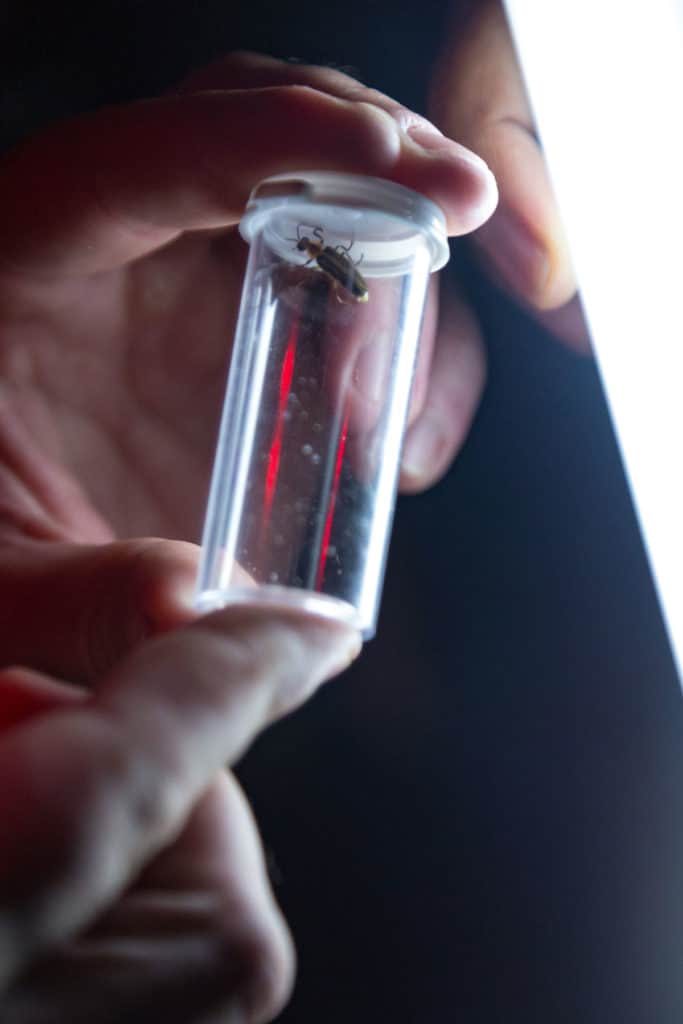
In the meantime, the Bethany Beach firefly awaits a decision from the federal government. It will take a concerted effort to save the species. Sussex County is the fastest growing county in Delaware, and much of the boom is along the coast. With development comes habitat loss and light pollution, among other environmental ills. But this species faces another daunting challenge: Sea levels are rising off the coast of Delaware at twice the global average. If the projections bear out, all of the firefly’s habitat may be underwater before the century is out. State officials have estimated that as much as 11 percent of Delaware’s land could be submerged by 2100, beginning with coastal areas.
For now, the Bethany Beach firefly is still out there if you know where to look. Last summer, Davis found the firefly in seven sites, including some that were different than those Heckscher identified two decades ago. Davis was not able to compile enough data to indicate whether the Bethany Beach firefly population has diminished in that time. But in 2019, the best night at the best site meant 20 to 30 fireflies, as compared to the hundreds Heckscher remembers from the Breakwater Beach wetland.
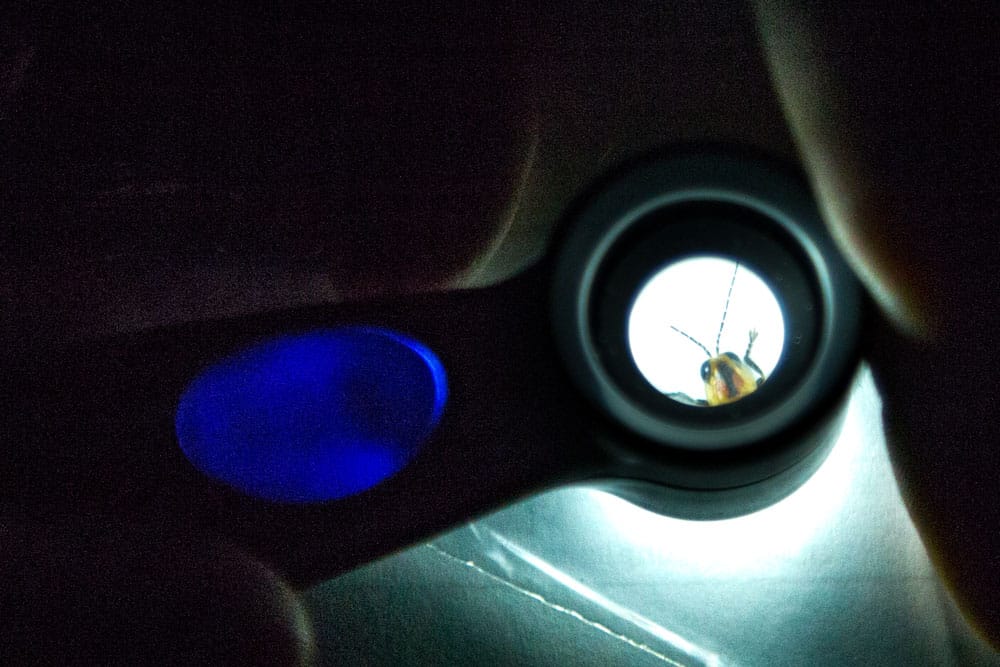
It’s almost dark when we see the first rapid double flash of green high over a stand of phragmites bordering the parking lot. Davis dashes forward, net aloft, but the insect seems to taunt him, flying high above, blinking out and appearing again 10 feet away. The interdunal swale is a small grassy spot nearby, surrounded by a perimeter of woody vegetation. On this August evening, it is bisected by a pair of muddy tire tracks from a utility truck, leading up to a power pole.
The darkness deepens and another firefly joins the first. Davis doesn’t manage to catch this one either. If he had, he would have examined the head, taken some measurements to be sure it’s the correct species, and released it. As it is, we watch them blink high over our heads, semaphores in the night.
In the decades since that first survey, Davis is the only one who has done any extensive research on the Bethany Beach firefly. He fears there won’t be time or resources to learn more before the species blinks out altogether. “You really need patience, time, and bodies to do this right,” he says, gazing up at the flashing green. “You could do a dissertation on what we don’t know about this firefly.”

